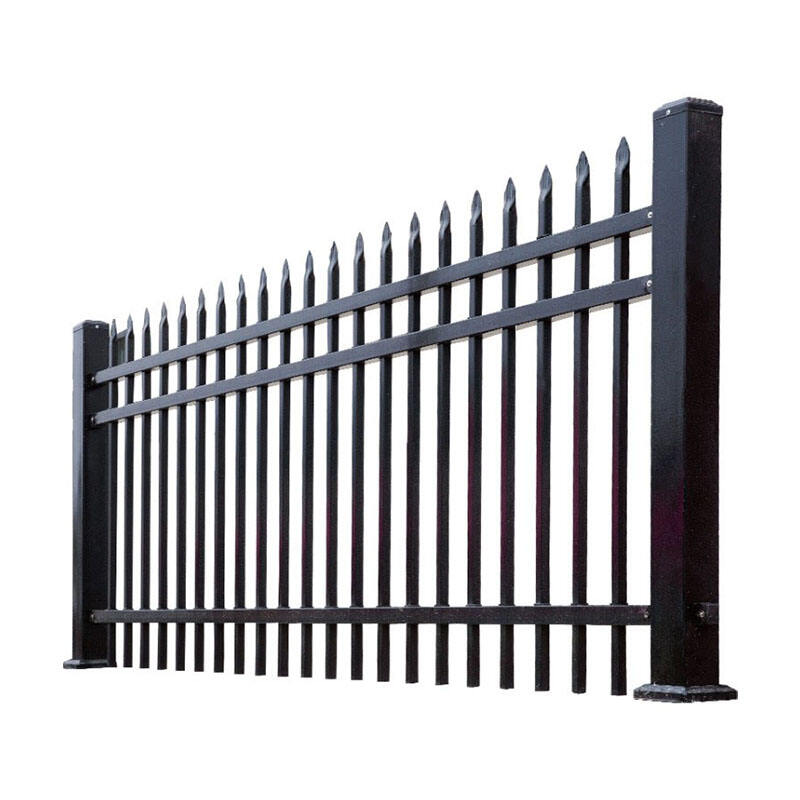How Rust Forms on Steel Fence Posts
Oxidation Process Explanation
Rust formation on steel fence posts is predominantly driven by the chemical process of oxidation. This process involves a reaction between iron, which is a key component of steel, and oxygen. When iron meets oxygen, often in the presence of moisture, it forms iron oxide or rust, resulting in corrosion. Moisture plays a significant role, as it can accelerate the rate of rusting by up to 50%. Variations in temperature further influence oxidation; high temperatures can hasten the reaction, whereas low temperatures slow it down. Initially, rust appears as small blemishes on the surface of the steel, but over time, it spreads and covers larger areas, leading to severe structural weakness.
Environmental Accelerators
Environmental conditions significantly impact the rusting process of steel fence posts. Factors such as humidity, fluctuating temperatures, and air quality are critical accelerators of corrosion. Humidity and temperature fluctuations cause condensation on steel surfaces, enhancing rust formation. Studies have shown that polluted environments can double the corrosion rates for steel structures due to increased exposure to corrosive elements. Additionally, proximity to coastal areas intensifies rusting, as salt accumulation from seawater acts as a catalyst for steel deterioration. Thus, understanding these environmental influences is crucial for effective rust management.
Ground-Level Vulnerabilities
The base of steel fence posts is particularly vulnerable to rust due to its direct contact with soil and moisture. Localized corrosion often begins at ground level where untreated steel sections may be buried. The constant exposure to moisture and soil accelerates rust formation, thereby compromising the structural integrity. Improper installation techniques exacerbate the issue, allowing moisture to seep into the metal. Moreover, organic materials like mulch and wet soil near the base retain moisture, further catalyzing the corrosion process. Awareness of these vulnerabilities and implementing proper installation and maintenance protocols can help mitigate rust issues effectively.
Preventive Maintenance Strategies
Starting with Galvanized Steel
Choosing galvanized steel for your fence posts offers numerous benefits, primarily due to its protective zinc coating, which serves as a robust barrier against rust. This protective feature not only enhances durability but also extends the life expectancy of your fence. Statistically, galvanized steel can endure up to 50 years with minimal corrosion if properly maintained. This longevity translates to significant savings in maintenance costs over time, making it a cost-effective choice for property owners. By opting for galvanized steel, you can reduce the frequency and expense of upkeep, ultimately maximizing your investment in a durable fencing solution.
Protective Barrier Applications
Applying protective coatings like paints, sealants, and rust-inhibitors is essential in shielding steel fence posts from rust. The choice of barrier depends on environmental conditions, with specific products designed for different climates and exposures. For instance, in humid or coastal areas, certain rust-inhibitors are more effective. Studies have demonstrated that consistent application of protective coatings can reduce rust formation by up to 70%. Regularly applying these barrier products ensures your fence retains its strength and aesthetics, minimizing potential repairs.
Drainage and Terrain Management
Ensuring proper drainage systems around your fence posts is crucial in minimizing moisture accumulation, a primary contributor to rust. By assessing and adjusting the slope of the terrain, you can direct water away from the fence, thereby reducing the risk of rust. Implementing strategic landscaping practices to enhance air circulation further prevents moisture pooling. These measures not only protect the integrity of your fencing but also enhance its longevity. With proper drainage and terrain management, you can significantly lower the incidence of rust and ensure your fence remains in top condition for years to come.
Rust Detection and Treatment
Identifying Early Corrosion Signs
Detecting rust early is essential in preventing extensive damage to your steel fence. The first signs of corrosion often include discoloration on the steel surface, flaking paint, and structural weakening. These symptoms manifest initially as reddish-brown patches or bubbles under the paint, indicating that rust is forming beneath. To catch these early signs, I recommend conducting regular visual inspections at specific intervals, such as quarterly, to ensure any deterioration is addressed promptly. Experts often suggest using non-destructive testing techniques, like ultrasonic testing, which can help identify corrosion hidden beneath the surface without damaging the fence.
Rust Removal Techniques
Once rust is detected, choosing the right removal technique is crucial for maintaining the integrity of your fence. There are several methods available:
- Mechanical Methods: These include sanding or using a wire brush to manually scrape off rust, suitable for smaller areas.
- Chemical Treatments: Rust removers and converters that contain phosphoric acid can effectively neutralize rust, turning it into a protective layer.
- Electrolytic Rust Removal: This method involves using electricity to separate rust from the metal and is effective for delicate items.
When engaging in rust removal, safety precautions—such as wearing gloves, goggles, and masks—are imperative to protect health and property. Statistics suggest that mechanical methods are about 60% effective for small-scale rusting, while chemical treatments can achieve up to 90% efficiency, making them a preferred choice for more extensive corrosion.
Damage Repair Protocols
After removing rust, it's essential to repair damaged sections to restore the fence's functionality and prevent future corrosion. The steps for repairing fence posts include thoroughly cleaning the area, followed by applying a rust-inhibiting primer. Once the primer dries, re-coating with a high-quality protective paint helps seal the metal against further exposure. Industry standards often recommend replacing severely damaged sections to ensure the fence's structural integrity. Prompt repairs extend the life of the fence significantly, allowing it to maintain its aesthetic appeal and functional utility for years to come.
Long-Term Protection Measures
Regular Inspection Routines
Establishing a regular inspection routine is vital for detecting rust on steel fences before it becomes a severe issue. I recommend scheduling inspections at regular intervals, such as quarterly, to ensure any emerging rust is identified early. To make these inspections more effective, employing tools like cameras can be beneficial, especially for checking hard-to-reach places or high posts. Documenting the results of each inspection is essential for tracking the condition of fences over time and holding maintenance teams accountable. Consistent documentation offers a clear overview of changes and assists in planning future maintenance activities with precision. This proactive approach to monitoring can significantly reduce long-term repair costs by intervening before significant damage occurs.
Seasonal Maintenance Checklist
A tailored seasonal maintenance checklist is an excellent way to prevent rust and maintain the pristine condition of your steel fences. The checklist should include tasks like repainting, cleaning, and thorough inspections of the fence posts. Seasonal variations, such as heavy rains in spring or freezing temperatures in winter, contribute significantly to rust formation, making such preventive measures crucial. By understanding how different weather patterns increase rust risks, I can effectively schedule maintenance activities ahead of these challenging periods. Crafting a personalized maintenance schedule based on local climate conditions and past rust occurrences ensures the strategies deployed are relevant and effective for your specific situation.
Vegetation and Debris Control
Controlling vegetation and debris around fence posts is essential to minimize moisture retention, a key culprit in rust development. I suggest regularly clearing the area around the posts, maintaining at least a one-foot clearance to ensure moisture doesn't linger near the metal. Some plant types can exacerbate rust problems due to their tendency to trap moisture; hence, selecting landscaping alternatives that don't hold water can be beneficial. This might include choosing gravel or drought-resistant plants that are less likely to contribute to moisture build-up. Implementing such vegetation control strategies will help protect the structural integrity and appearance of your fencing system, offering lasting resilience against rust.






